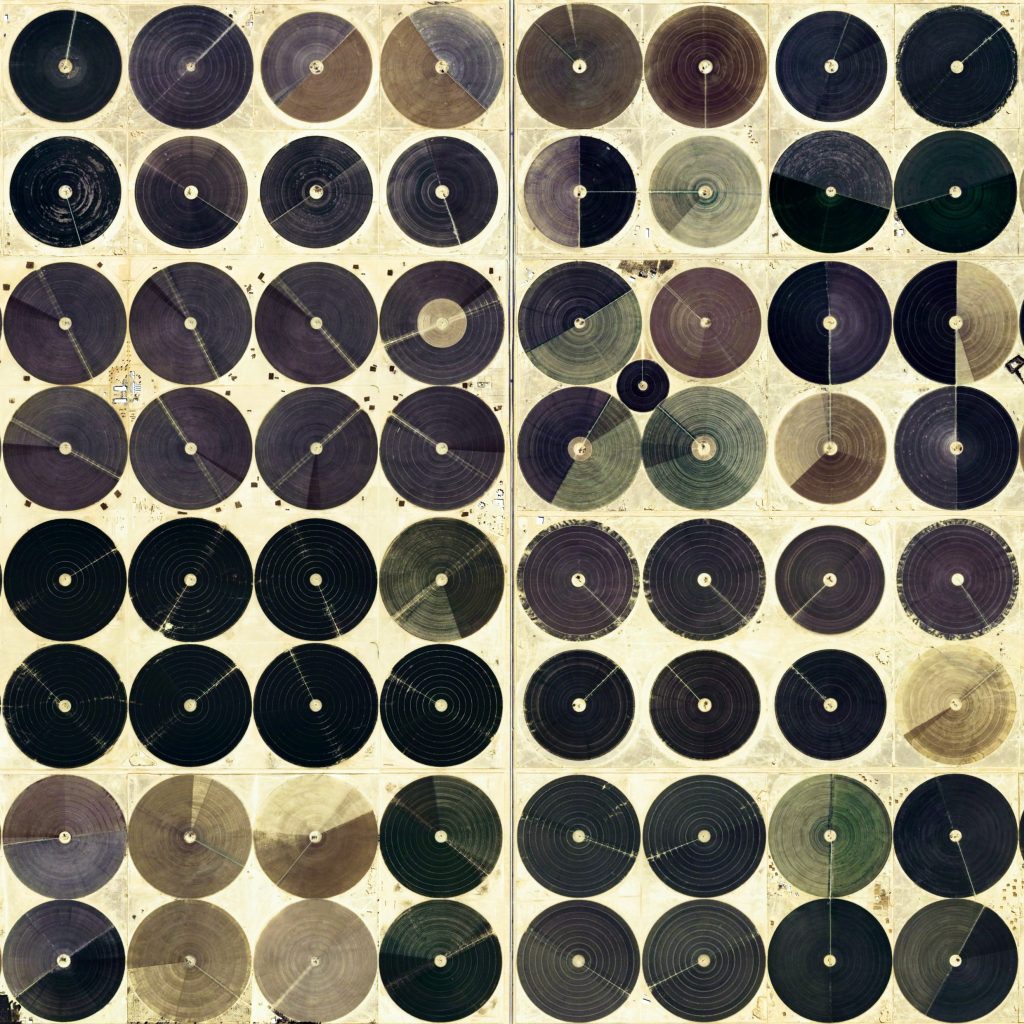Wadi As-Sirhan Basin, Saudi Arabia
https://goo.gl/maps/wrZMNUPhGao
.

.
Northern Saudi Arabia hosts some of the most extensive sand and gravel deserts in the world, but modern agriculture has changed the face of some of them. This photograph an almost surreal view of abundant green fields in the midst of a barren desert.
.
As recently as 1986, there was little to no agricultural activity in the Wadi As-Sirhan Basin. But over the past 26 years, agricultural fields have been steadily developed, largely as a result of the investment of oil industry revenues by the Saudi government. Crops grown in the area include fruits, vegetables, and wheat.
.
The fields are irrigated by water pumped from underground aquifers. That water is distributed in rotation about a center point within a circular field—a technique known as center-pivot agriculture. The approach affords certain benefits compared to traditional surface irrigation, such as better control of water and fertilizer use. This so-called “precision agriculture” is particularly important in regions subject to high water loss due to evaporation. By better controlling the amount and timing of water application, evaporative losses can be minimized.
.
Words: earthobservatory.nasa.gov/
.
#earthimages #earthimage #upintheair #abovetheclouds #satelliteimage #satelliteimages #EarthOverhead #overview #overvieweffect #saudi #aquifers #saudiarabia #WadiAs-SirhanBasin #agriculture



